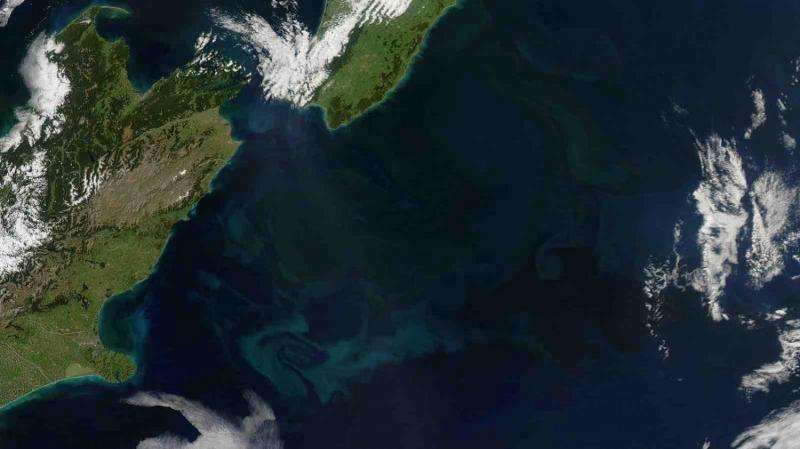Plankton blooms in New Zealand suggest the ocean is responding to climate change

The appearance of white blooms of plankton east of New Zealand suggests the ocean is responding to climate change, according to research by Victoria University of Wellington scientists.
As part of her Master's study, Bella Duncan investigated coccolithophores, a white algae with remains known as coccoliths.
Under favourable, warm conditions, these algae grow rapidly and turn the ocean's surface milky white—a natural phenomenon known as a 'bloom'.
Satellite and ship-based observations show coccolith blooms are moving south as the ocean warms and becomes less turbulent, similar to the way it did around 130,000 years ago when the last major warm period occurred.
"Our results show that during that last warm period, when the ocean was about one to two degrees warmer than present, sediments on the seabed were mainly made up of coccoliths," says Ms Duncan.
Coccoliths are deposited on the ocean floor and form white mud similar to the White Cliffs of Dover, an iconic natural landmark in the United Kingdom that was also formed during a previous warm period about 70 million years ago.
"The same process appears to be happening now, suggesting the New Zealand ocean is currently responding the present phase of global warming. This is also a trend that has been increasingly observed in other parts of the world," says Professor Lionel Carter from Victoria's Antarctic Research Centre, who co-supervised the research.
"While the ramifications of this change on fish stocks, uptake of carbon dioxide and general ocean health have yet to be evaluated, it is clear that change is underway."
Ms Duncan, who is now completing a PhD, was also supervised by Dr Gavin Dunbar from Victoria's Antarctic Research Centre and Dr Helen Bostock from the National Institute of Water and Atmospheric Research (NIWA) during this research.
To carry out this research, the team examined cores of sediment from subantarctic waters on the vast Campbell Plateau south of New Zealand.
With these samples, Ms Duncan used a laser based method to determine the presence of coccoliths.
"In a two-metre core you have a 200,000 year old record of sediment deposition. We took samples at frequent, regularly-spaced intervals down the cores to gain an insight into coccolith production in the past," she says.
The study, published this month in international journal Global and Planetary Change, is part of a wider research project using records of marine environmental change during past warm extremes of climate to assess potential environmental responses under modern global warming.
More information: Bella Duncan et al. Interglacial/glacial changes in coccolith-rich deposition in the SW Pacific Ocean: An analogue for a warmer world?, Global and Planetary Change (2016). DOI: 10.1016/j.gloplacha.2016.08.001
Provided by Victoria University of Wellington




















